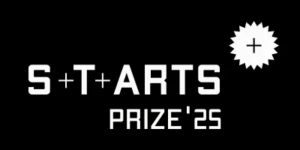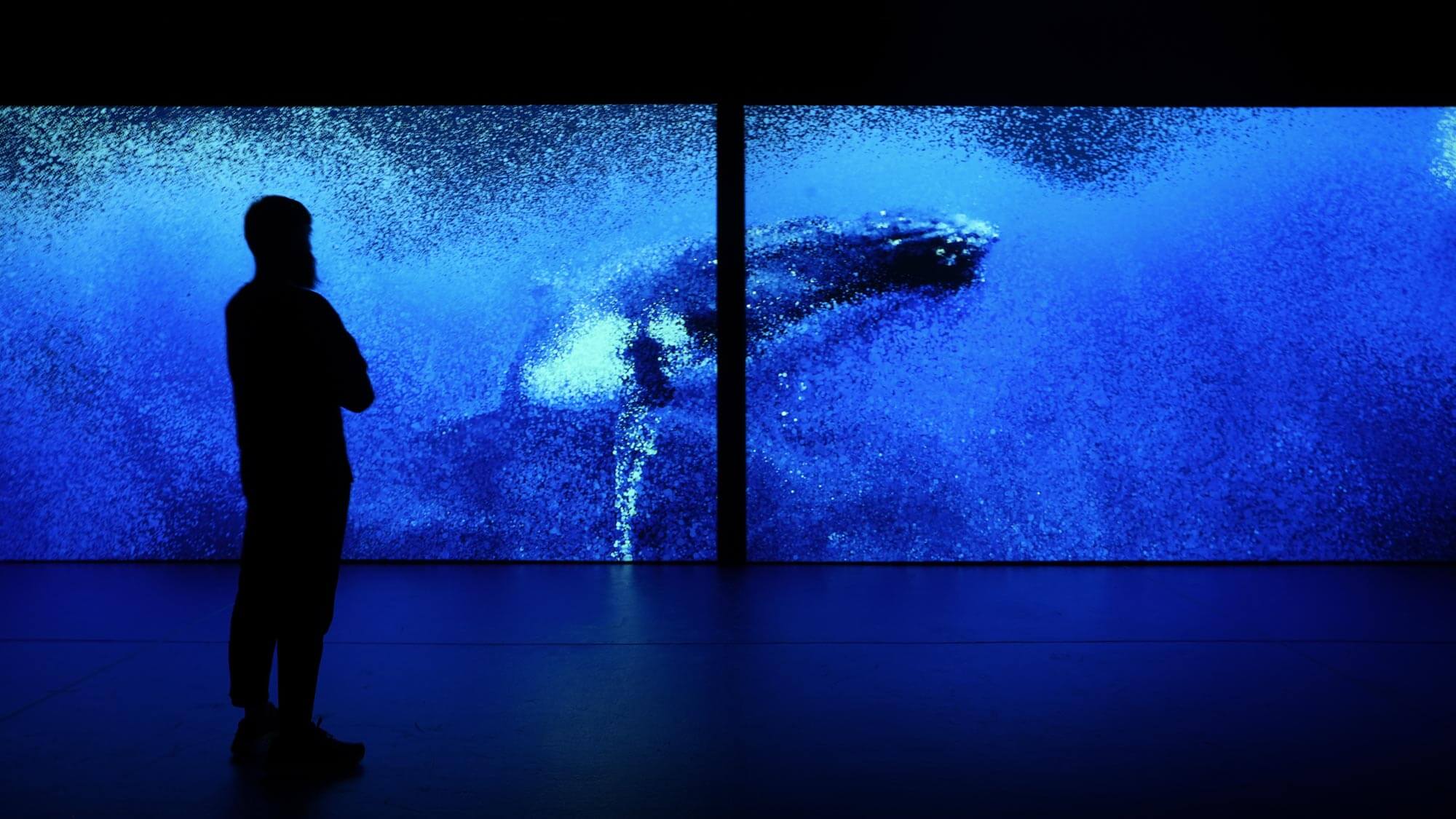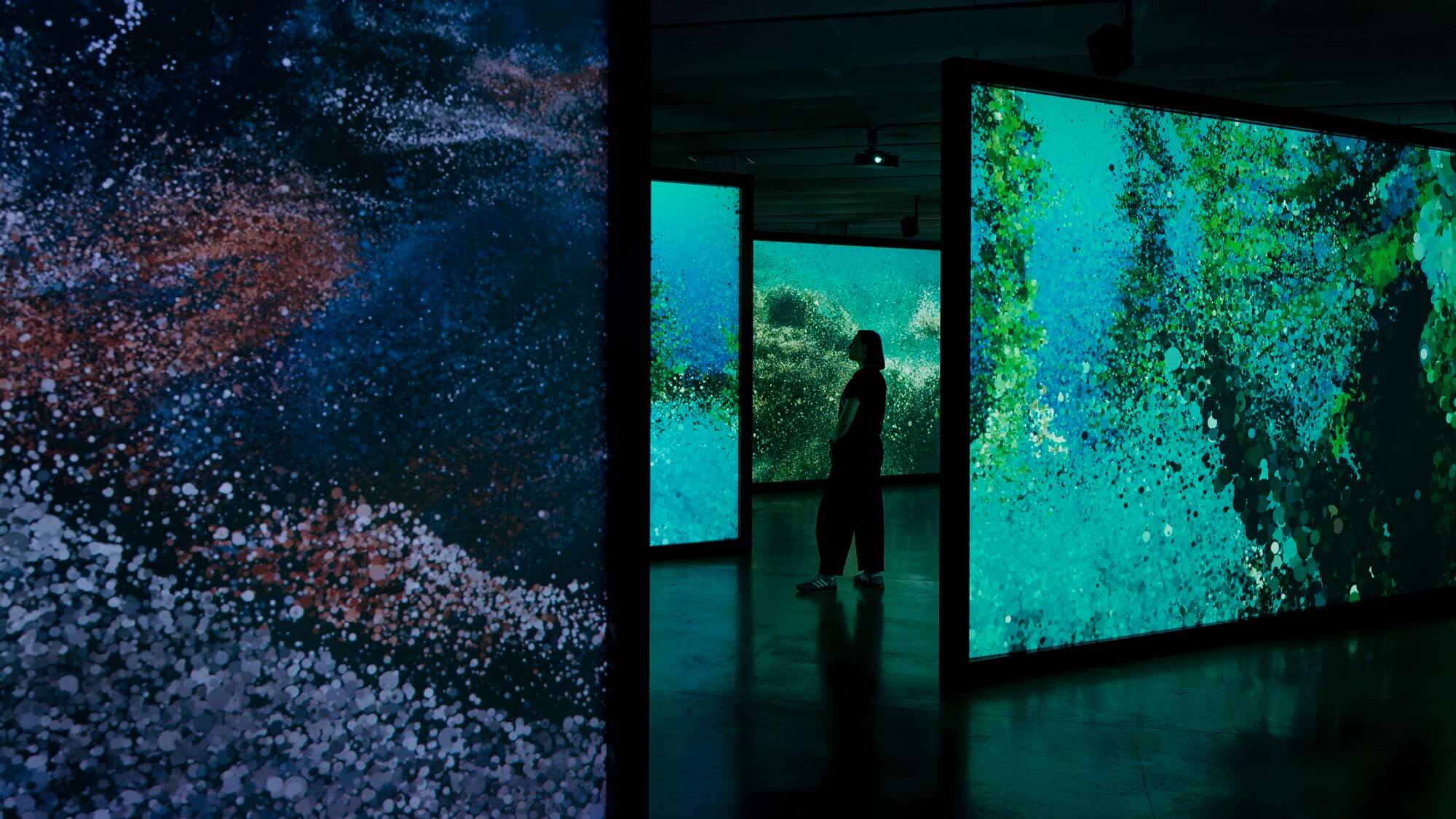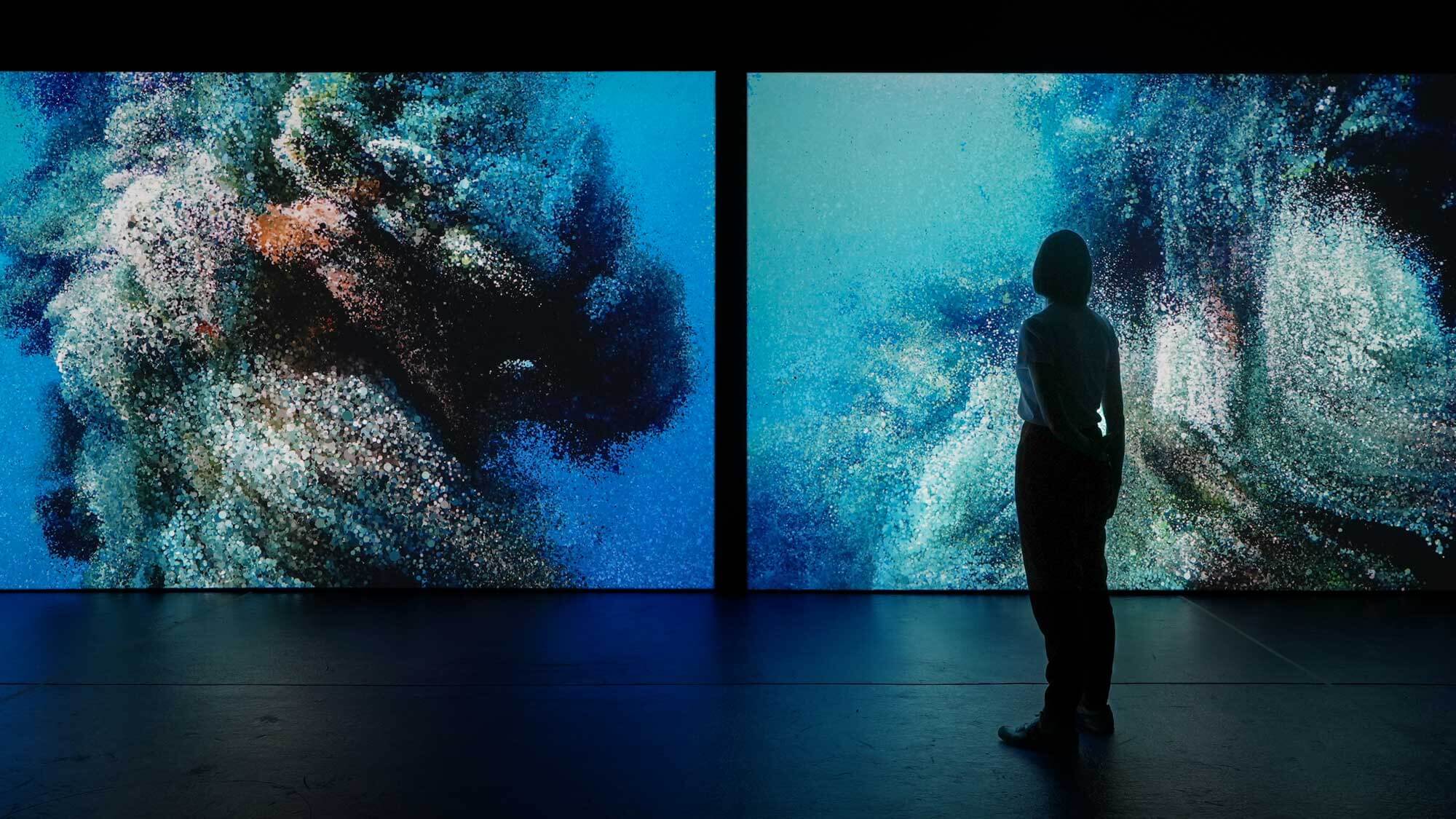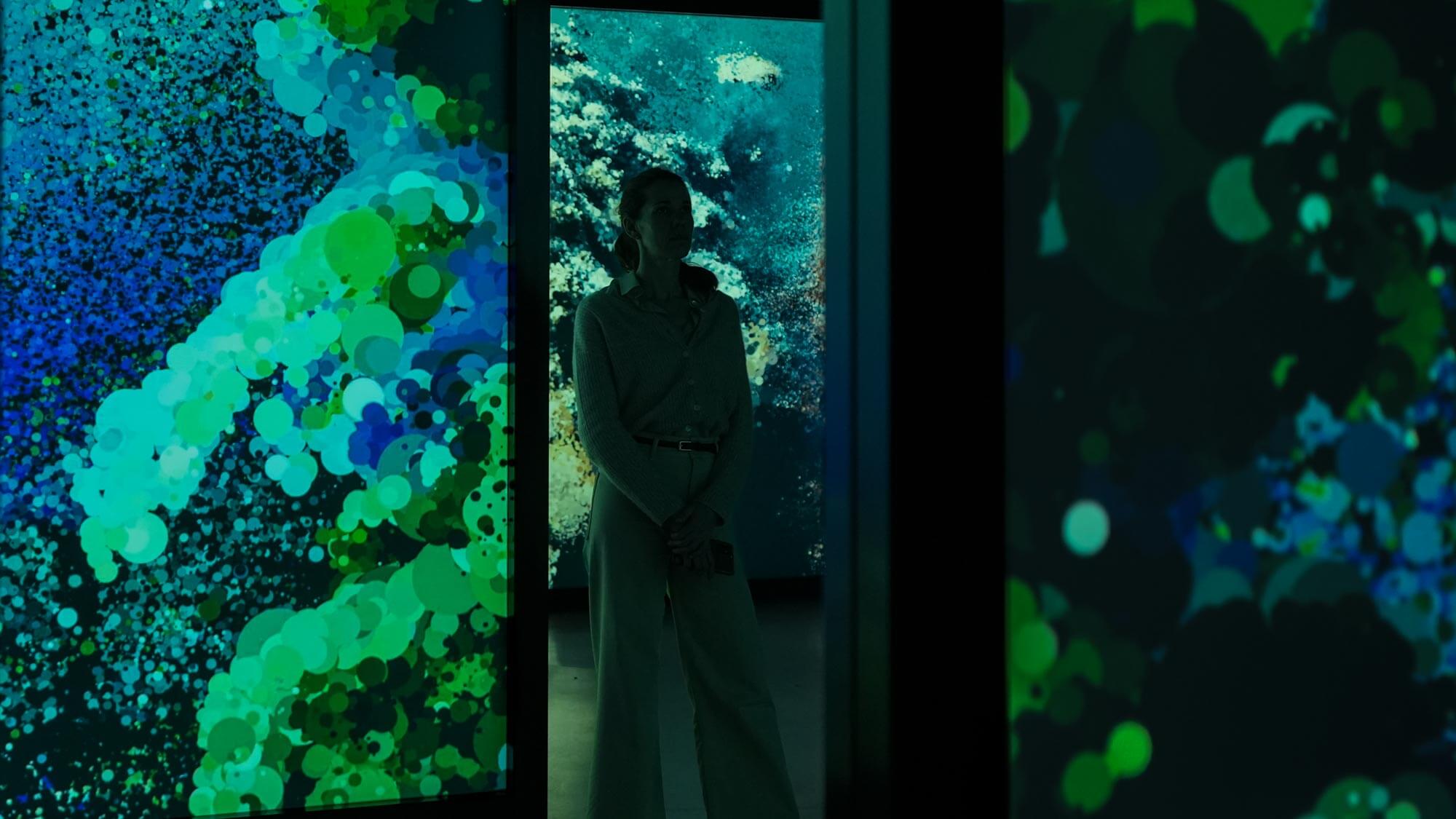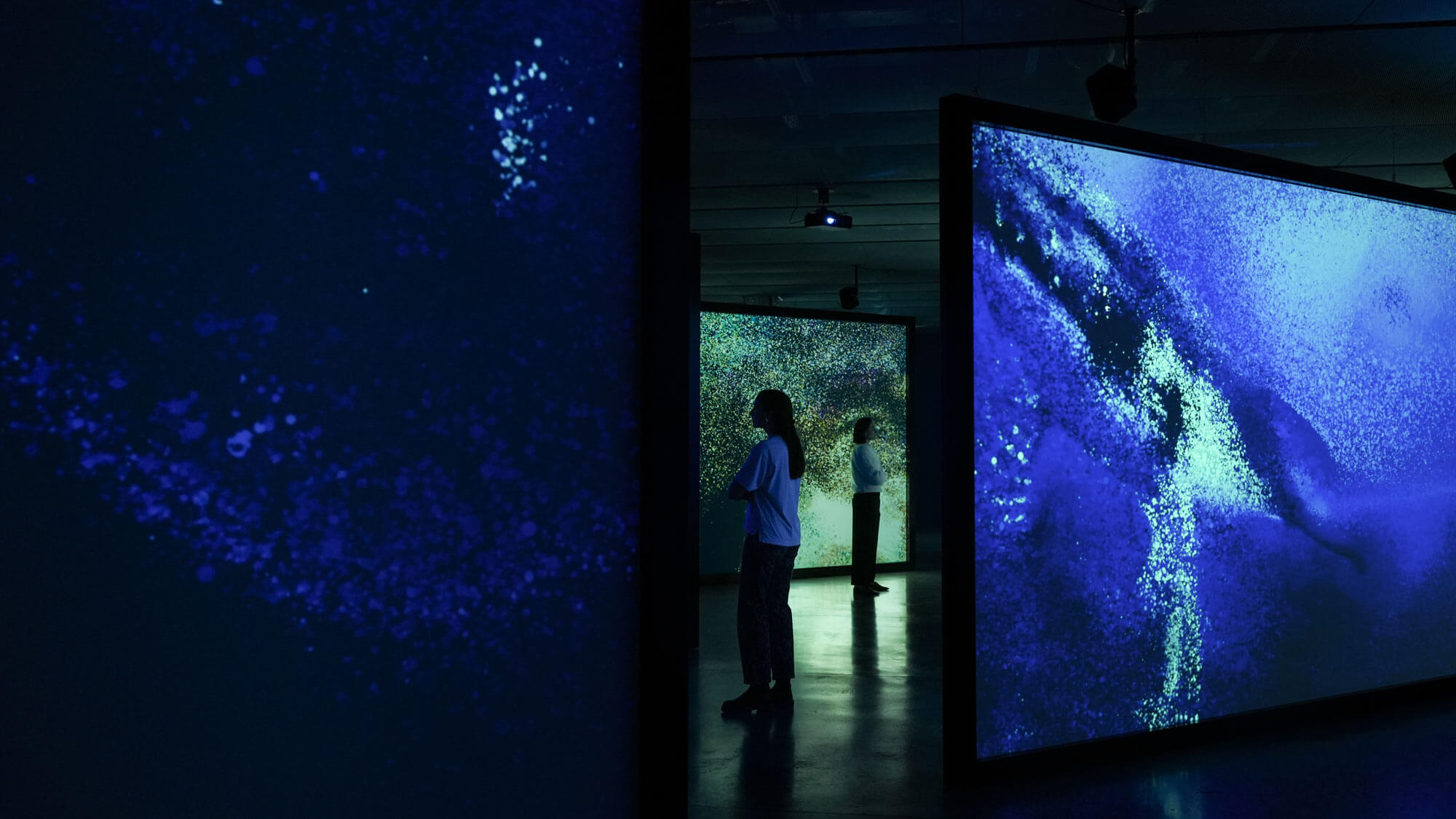Honorary Mention
Seeing Echoes in the Mind of a Whale is a large-scale audiovisual installation immersing viewers in the sensory world of cetaceans, celebrating the rich biodiversity of our oceans. Focusing on bottlenose dolphins, humpback whales, and sperm whales observed along the Spanish coast, with recordings from the Mediterranean and beyond, the project explores the crucial role of sound for these marine mammals.
marshmallowlaserfeast.com/project/seeing-echoes-in-the-mind-of-the-whale
At the heart of this work is sound, a crucial element for cetaceans. In water, sound travels five times faster than in air, allowing whales to map their surroundings through echolocation and communicate across vast distances. However, this evolutionary adaptation is threatened by increasing anthropogenic noise pollution.
The installation combines hydrophone recordings, underwater videography, scientific insights, and real-time computing to offer a multisensory experience that bridges the gap between our world and the whales’ umwelt. Through machine learning algorithms, underwater video data is processed to extract information, creating visualizations that respond in real-time to acoustic data.
The project is grounded in pioneering research from the Laboratory of Bioacoustic Applications (LAB) at the Universitat Politècnica de Catalunya on the impact of anthropogenic noise on marine ecosystems. LAB has extensively documented how acoustic pollution alters the behavior, physiology, and reproduction of marine animals, from microscopic invertebrates to large cetaceans.
Seeing Echoes in the Mind of a Whale not only translates this scientific data into an immersive audiovisual experience but also aims to raise awareness about the urgency of protecting the oceans. Through this symbiosis of bioacoustics and creativity, the installation invites reflection on human impact on marine ecosystems and the need to preserve their balance to ensure a sustainable future.
Credits
Marshmallow Laser Feast: Ersin Han Ersin, Robin McNicholas, Barnaby Steel in collaboration with Tom Mustill and UPC Laboratory of Applied Bioacoustics (LAB)
Executive producers: Carolina Vallejo, Eleanor (Nell) Whitley, Mike Jones
Artist and lead developer: Natan Sinigaglia
Senior producer: Martin Jowers
Sound design, engineering and spatialization: Simon Hendry
Houdini technical VFX artist: Nicolas Le Dren
Infrastructure lead: Andrew Robinson
Studio manager: Sarah Gamper Marconi
Studio assistant: Alex McRobbie
Gen Ai VFX Pipeline: Nilor Corp
Scientific advisors & contributors, video and audio sources:
Tom Mustill
John Ryan (MBARI)
Professor Michel André (LAB)
Steffen De Vreese, MVM, PhD (LAB)
Howard Hall
Steve McNicholas (Yes/No Productions)
Luke Cresswell (Yes/No Productions)
Daan Verhoeven
Misael Morales Vargas (Biosean)
Open Planet (openplanet.org)
Aguasonic (Freesound)
Special thanks to: John Ryan, Howard Hall, Steve McNicholas, and Luke Cresswell for their boundless generosity and aquatic insights.
Curated by José Luis de Vicente, Maria Brancos Barti
Commissioned by Design Hub Barcelona and Espacio Fundación Telefónica
With support from: Design Hub Barcelona; Fundación Telefónica
Biography
Marshmallow Laser Feast (MLF) is an experiential artist collective. They believe in the power of stories to tickle senses and shift perceptions. Their work takes people on a multisensory journey to where imagination and information collide. From coders to poets, chemists to ventriloquists, brands to institutions, they collaborate with specialists in all disciplines. They explore new forms of culture, interrogate their relationship with the world around them, and leave a glittery slug trail as they journey through the cosmos.
Jury Statement
While oceans and marine ecosystems are crucial for our survival, human activities including overfishing, shipping, extractivism, and pollution, are heavily affecting the health and biodiversity of these important environments that we mostly perceive as endless resources to be exploited. And despite our significant dependence and connection with the ocean, we often ignore or feel disconnected from the life and creatures that inhabit this world that is so intertwined with ours. Some of these creatures, cetaceans, apart from their important role in reducing CO2 amounts in our atmosphere and acting as indicators of the health of our oceans, are complex, highly intelligent creatures with great cognitive skills.
Seeing Echoes in the Mind of the Whale is a beautiful, immersive experience taking us into a journey alongside three cetacean species: a humpback whale, a bottlenose dolphin, and a sperm whale. In an attempt to bring us closer to these extraordinary animals, while also urging us to reflect on how our activities impact their lives and environment, the project bridges scientific research, marine biology, and storytelling, and with the use of real-time computing, marine data, and recordings that result in stunning visualizations responding to acoustic data in real-time, allows humans, in accessible, engaging ways, to experience underwater worlds through the eyes and perspective of these amazing creatures, whose very existence is threatened by our actions.
